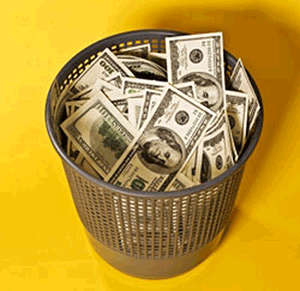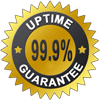
Features
 Calculate rates for any equipment or service
Calculate rates for any equipment or service
Calculate budgeted hourly rates for any printing and packaging equipment or service. Gain insight into your true costs
Gain insight into your true costs
Get a detailed breakdown of every cost component that composes your hourly rates. Works with any estimating software
Works with any estimating software
Provides budgeted hourly rates (BHRs) required by any estimating & costing MIS/ERP software. Fast and easy
Fast and easy
No accounting knowledge needed. Update your budgeted hourly rates in just minutes! Benchmark against other companies
Benchmark against other companies
Benchmark your labor, factory, and overhead costs and BHRs against other companies. Increase Good Sales, Eliminate Bad Sales
Increase Good Sales, Eliminate Bad Sales
Win more orders with higher profit and contribution margins. Built-in industry "Blue Book" rates study
Built-in industry "Blue Book" rates study
Includes cost and rates studies for thousands of equipment and services for comparisons. Import your data
Import your data
Effortlessly import your spreadsheets, income statements, budgets, and other data. Find the best pricing strategy
Find the best pricing strategy
Create various cost and material markups and pricing strategies using your budget. Project your profitability
Project your profitability
Create income statement based on your budget with projected profit margins and ratios. Create multiple sets of rates
Create multiple sets of rates
Manage rates and costs for multiple companies, divisions, locations, or what-if scenerios. Track changes in costs and rates
Track changes in costs and rates
See how your rates and costs have changed over time and why. Satisfaction guarantee or your money back!
Satisfaction guarantee or your money back!
If you're not happy within the first 30 days, for any reason, we'll refund all of your money. FREE expert consulting support
FREE expert consulting support
You receive support from a real live Profectus industry business consultant, for any reason. Makes Spreadsheets Obsolete
Makes Spreadsheets Obsolete
Cost Rates Advisor is considerably easier, faster, and more reliable than spreadsheets. Secure, Protected, and Confidential
Secure, Protected, and Confidential
Profectus employs strict security policies to your account and data. Works anywhere you do 24/7/365
Works anywhere you do 24/7/365
Cost Rates Advisor runs in the cloud. Use it anywhere with a browser and internet. Frequently Asked Questions
Frequently Asked Questions
The answers to common questions about budgeted hourly rates and Cost Rates Advisor.
Calculate budgeted hourly rates for any printing and packaging equipment or service.
Get a detailed breakdown of every cost component that composes your hourly rates.
Provides budgeted hourly rates (BHRs) required by any estimating & costing MIS/ERP software.
No accounting knowledge needed. Update your budgeted hourly rates in just minutes!
Benchmark your labor, factory, and overhead costs and BHRs against other companies.
Win more orders with higher profit and contribution margins.
Includes cost and rates studies for thousands of equipment and services for comparisons.
Effortlessly import your spreadsheets, income statements, budgets, and other data.
Create various cost and material markups and pricing strategies using your budget.
Create income statement based on your budget with projected profit margins and ratios.
Manage rates and costs for multiple companies, divisions, locations, or what-if scenerios.
See how your rates and costs have changed over time and why.
If you're not happy within the first 30 days, for any reason, we'll refund all of your money.
You receive support from a real live Profectus industry business consultant, for any reason.
Cost Rates Advisor is considerably easier, faster, and more reliable than spreadsheets.
Profectus employs strict security policies to your account and data.
Cost Rates Advisor runs in the cloud. Use it anywhere with a browser and internet.
The answers to common questions about budgeted hourly rates and Cost Rates Advisor.
About
 About Cost Rates Advisor and Profectus
About Cost Rates Advisor and Profectus
Learn more about Cost Rates Advisor and Profectus printing & packaging business management consultants. Over 400 customers
Over 400 customers
Printing companies throughout the United States and Canada have discovered the benefits of Cost Rates Advisor. Contact Us
Contact Us
Talk to sales about how Cost Rates Advisor can help your business.
Sign Up
Learn more about Cost Rates Advisor and Profectus printing & packaging business management consultants.
Printing companies throughout the United States and Canada have discovered the benefits of Cost Rates Advisor.
Talk to sales about how Cost Rates Advisor can help your business.
Login







